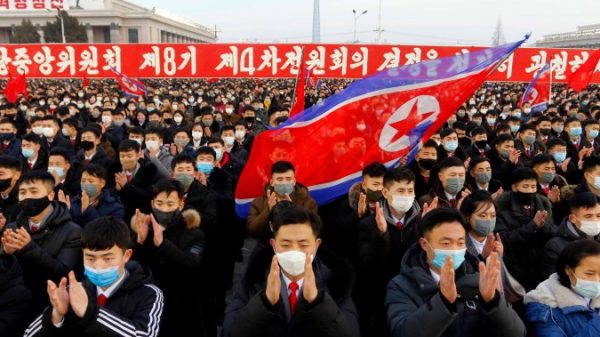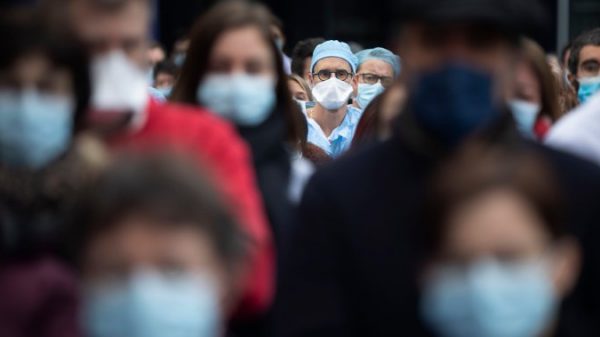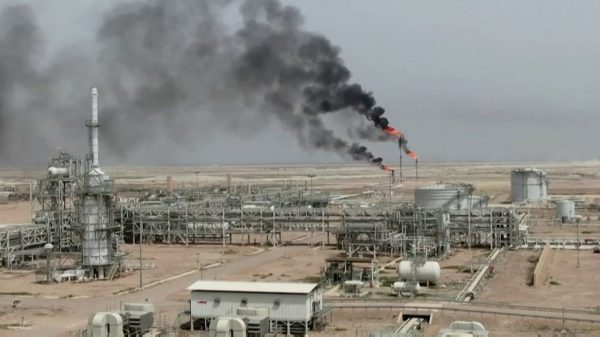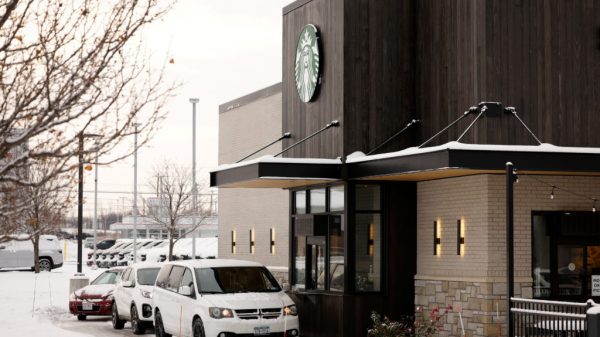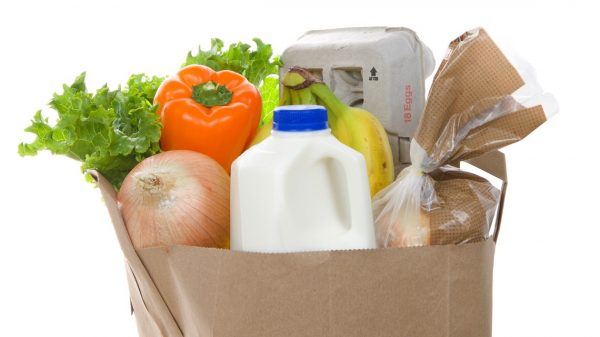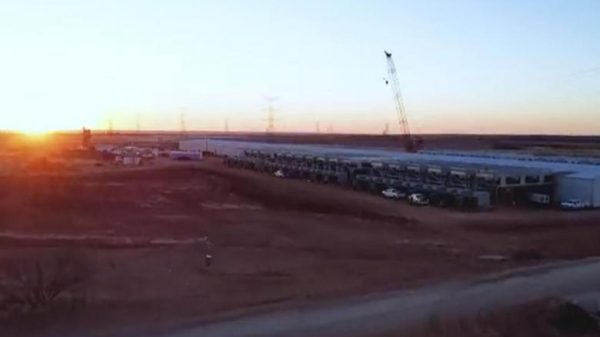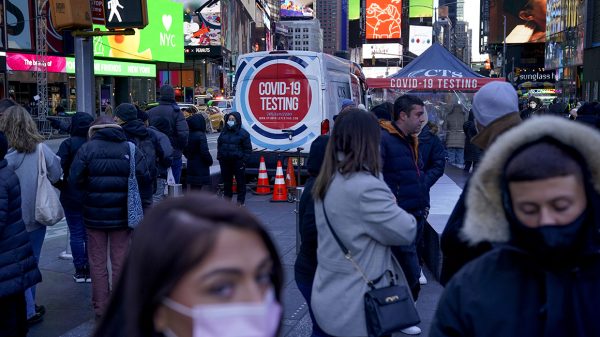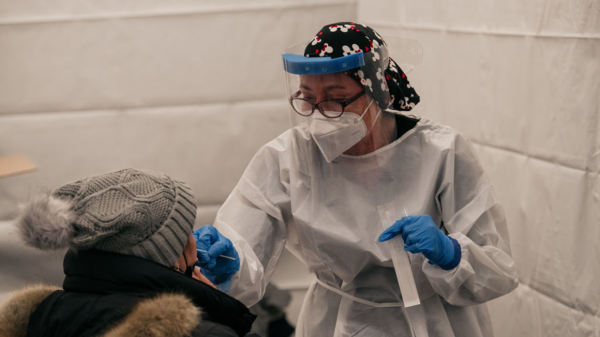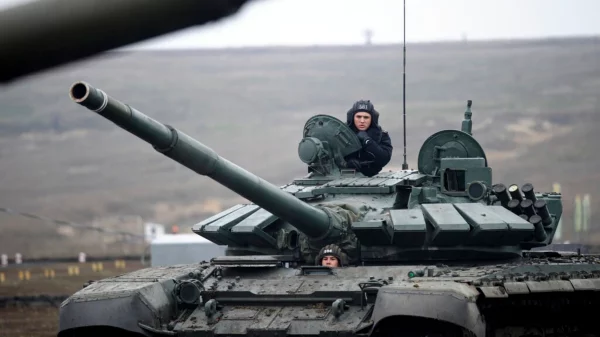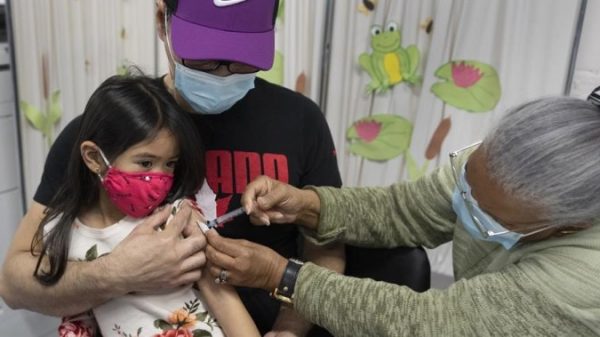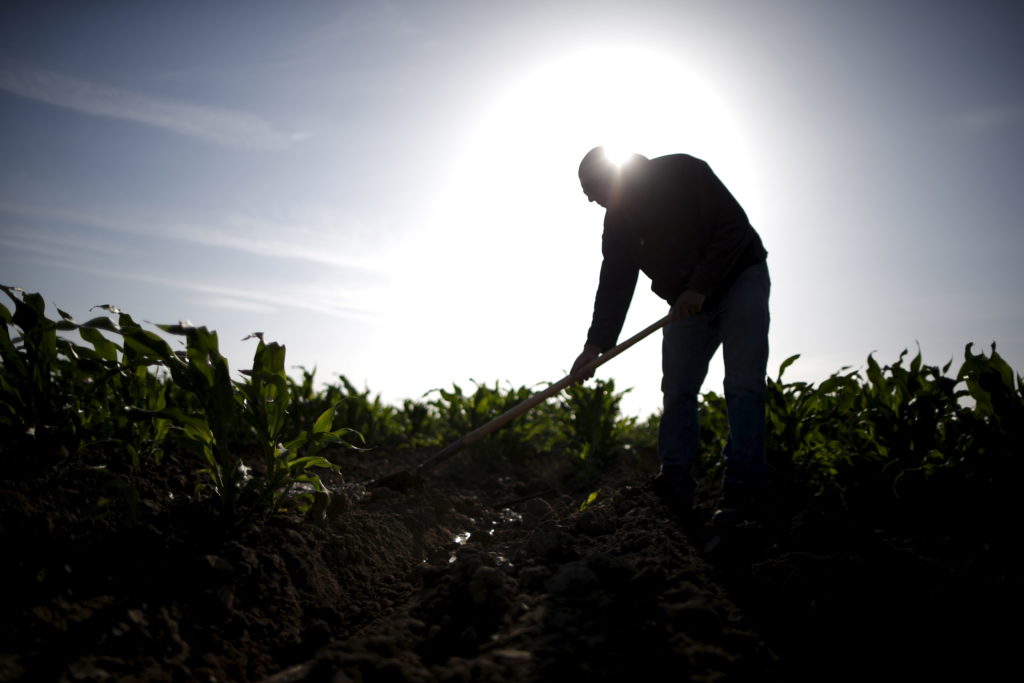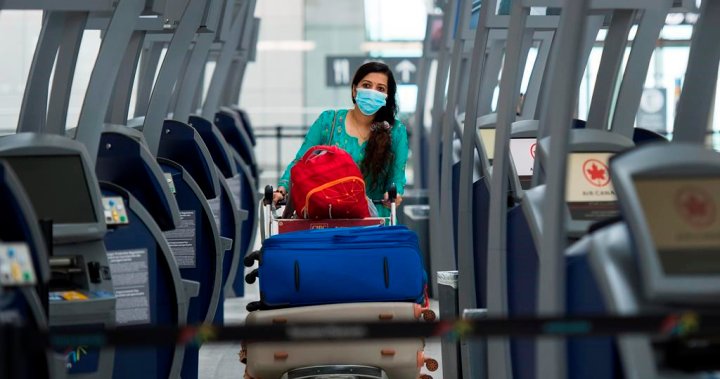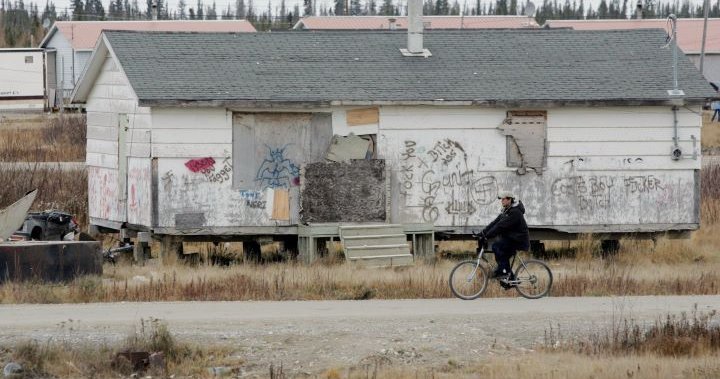As he neared the end of his shift July 29 on a hops field in Washington’s Yakima County, Florencio Gueta-Vargas collapsed. That day, temperatures would reach triple digits. When he didn’t return home, his family went searching at the field where he worked; a relative told them that the truck he drove was still at the farm’s main office. That’s where a sheriff’s deputy told the family Gueta-Vargas had died.
Gueta-Vargas, 69, had not been taken to the hospital, but instead directly to a local morgue.
The family believes Gueta-Vargas’ death could have been prevented. He was not ill, his daughter Lorena Gonzalez said. He often advised his daughters to rest their own bodies as he sipped on a drink in a lawn chair in the family’s driveway, where he’d sit after work each day.
Gonzalez, 29, said the family is searching for answers about why her father, along with other workers, had been working under the heat for so long that day. Gonzalez said she has visited the site where her father was found every day since his death, and it’s easy to feel the high humidity and smoke from nearby wildfires, and her chest quickly feels heavy, she said. Her father drove a tractor used for discing with no roof, which meant he was constantly exposed to these elements, she said.
Last month, Yakima County saw higher overall temperatures: Highs averaged around 96 degrees while lows averaged around 63 — 6 and 7 degrees higher, respectively, than normal. Days with temperatures over 90 degrees nearly doubled. The outdoor temperatures at the time of his death were between 97 and 100 degrees. Gonzalez said her family doesn’t believe her father was provided the protection needed to work under the high temperatures, nor did his employer have good mechanisms in place to make sure he was okay throughout his shift.

Farmworkers carry ladders through cherry fields in Yakima County, Washington during summer 2021. Photo courtesy of United Farm Workers
“I just wish they would understand he was a person, that this is so hard on his daughters. My dad — God knows how long he was out there,” Gonzalez said.
The United States is undoubtedly becoming hotter. This year has set record temperatures, especially in the West, and heat waves are becoming a more regular occurrence. While many residents in these regions can work in closed environments with air conditioning, those who labor outside must show up every day to work in increasingly higher temperatures due to climate change. And there are no federal standards protecting those who work outside from heat illness as weather becomes more extreme.
Heat deaths have been historically hard to track, and are likely undercounted, experts say. Excessive heat seriously injured nearly 70,000 U.S. workers and killed 783 of them between 1992 and 2016, according to federal data analyzed by Public Citizen, a nonprofit consumer advocacy organization. The Centers for Disease Control found in 2008 that U.S. crop workers are 20 times more likely to die from illnesses related to heat stress than U.S. civilian workers overall. While this number is dated, researchers say this increased threat is the same if not worse than it once was as temperatures continue to rise.
READ MORE: Extreme heat waves in a warming world don’t just break records – they shatter them
There’s no standard reporting mechanism for heat-related deaths, so states handle it differently. Environmental factors, like temperature and activity, are often either not recorded nor considered when determining a cause of death, said Dr. Gregory McDonald, chief deputy coroner of Montgomery County Pennsylvania and chairman of the Department of Forensic Medicine and Pathology at the Philadelphia College of Osteopathic Medicine. The only way to definitively link a death to heat is if the person’s body temperature is recorded. And for that to happen, the person has to be found alive or immediately after death.
“If someone is not found immediately, you have to look at the circumstances in which they’re found,” he said. Extreme heat can send someone into cardiac arrest and damage vital organs, and people living with comorbidities, like heart disease or diabetes, are even more vulnerable to fatality.
Yakima County coroner Jim Curtice told the PBS NewsHour that Gueta-Vargas’ official cause of death was presumed arteriosclerotic heart disease — Gueta-Vargas had a pre-existing heart condition — with environmental heat as a contributing factor. Curtice said it was ruled a natural death, which means when the country tallies mortality data, it will likely show up as one related to cardiac arrest or heart disease, and he isn’t sure if heat would be recorded.
Heat can exacerbate an existing condition, McDonald said, so if temperature is not recorded in addition to other conditions the person may have, the death is considered natural.
“I do believe many of [heat-related deaths] are misclassified as natural deaths, whereas a hypothermia or heat related death would be considered an accident,” he said.
One study examining possible solutions for farmworkers found that the number of unsafe working days for farmworkers will double by the middle of the century — in Merced, California, they’ll climb from 20 to 54 annually. Areas like Florida, with a combination of high heat and humidity, will be unsafe for the entirety of the growing season.
WATCH: Heatwaves are becoming more common. Here’s how the U.S. must plan for them
“You just wonder how many more of these names we will be memorializing in protections that can’t even pass,” Elizabeth Strater, an organizer with the United Farm Workers who spoke with the farmworker’s family, told the NewsHour. “Given how fully aware the world is that heat is deadly to farmworkers, I don’t understand how we are still having these conversations over and over, over what is an entirely preventable tragedy.”
Getting food to table
The United States’ economy is dependent on farmworkers. Crop sales amount to billions of dollars each year in the United States, and they’re harvested by millions of agricultural workers who make between $17,500 to $19,999 annually, according to the 2015-2016 National Agricultural Workers survey, the most recent available. Unlike employers who offer hourly rates, farmworkers are often paid by how much they harvest per day, in some cases earning less than minimum wage.
The labor is physically demanding; farmworkers must make precise, intricate movements while picking crops and transporting them to bins. One farmworker featured in a tweet by UFW picked 12 baskets of okra at $12 a pop during a 109-degree day, according to the organization. His day’s earnings amounted to $144.
Strenuous activity outdoors can be a danger at temperatures beginning at 80 degrees, according to the National Weather Service, But when wage is dependent on productivity, workers push through unsafe conditions regardless, even if their body is telling them to stop.

Farmworkers work in cherry fields in Yakima County, Washington during summer 2021. Photo courtesy of United Farm Workers
Gonzalez said the coroner’s office told her family that it appeared their father’s tractor had become stuck in the mud and he might have tried to get it unstuck. Given the heat and humidity and air quality at the time, Gonzalez believes her father might have been exhausted by this feat.
Andy Gamache, co-owner of Virgil Gamache Farms, said he was the first to arrive at the site after he noticed Gueta-Vargas’s truck was still at the main office. Gueta-Vargas, who had worked for the company for 18 years, was supposed to be off work at 2:30 p.m. At 3 p.m., Gamache said, he found him sitting on the step of the tractor, breathing but unresponsive.
Gamache said he and another worker performed chest compressions, but Gueta-Vargas died before an ambulance arrived. Gamache called the death “tragic and unexpected,” and said he didn’t have enough time to notify family during the response.
The company typically employs up to 200 workers during peak harvest seasons for various production jobs. Gamache said he looks at forecasts to determine what the work days will look like. Work crews have been starting work at 6 a.m. to beat the heat, and are done by 2:30 p.m. At certain times, he said, they’ve adjusted their weather to the heat. In June, crews headed into work at 5 a.m. and were out by 10 a.m. during an extreme, deadly heat wave that hit the Pacific Northwest.
“The health of our crew is very important to us, so we make sure that we listen to what their needs are regarding the temperature,” Gamache said.
Lack of policy
Only California, Oregon, Washington and Minnesota have heat-standard laws that are meant to monitor heat and protect workers from the risk of heat illnesses. No such law exists at the federal level. Advocates say creating a federal heat standard would force employers to track heat risks better as the climate moves into dangerous conditions for parts of the country.
This week, Sens. Alex Padilla of California and Sherrod Brown of Ohio wrote to Secretary of Labor Marty Walsh to demand the Department of Labor’s Occupational Safety and Health Administration establish a federal heat standard. The bill, called the Asuncion Valdivia Heat Illness and Fatality Prevention Act in honor of a worker who died of heat illness, was introduced in March. It would, among other things, create protections for workers laboring outdoors as well as indoors, such as requiring employers to offer paid breaks in cool spaces, access to water and limitations on time exposed to heat, as well as directing employers to provide training for their employees on the risk factors that can lead to heat illness and how to treat symptoms.
The senators say climate change is worsening the danger of heat-related illnesses among the workforce and OSHA must create permanent and enforceable heat standards.
READ MORE: California may spend billions on permanent relief shelters as sweltering heat blankets the state
Edward Flores, a sociology professor with the Community and Labor Center at University of California, Merced, said large agricultural productions like those in California’s Central Valley — where half of the state’s farmworkers live — hinge on employers “offloading risks onto their workers,” creating an environment where workers who are vulnerable to illness or death are easily replaced while their work and living conditions often go unaddressed.
“If a worker dies, it’s easier for the employer to say that [it] had nothing to do with their job and it had everything to do with the diabetes,” Flores said. “It allows them to just hire one worker after another regardless of what is happening. If [employers] face consequences for the types of environments that workers live and work under, then we would begin to see some changes in the way that agriculture is produced.”
Organizers say the nature of farmworkers — migrant and mobile and sometimes crossing state lines to work — poses direct challenges when there aren’t federal protections in place to educate the workforce and enforce rules on employers. Studies show physical demands and vulnerabilities such as poverty, migrant status, language barriers and barriers to health care elevate the risks for farmworkers working under extreme temperatures.
“These are not financial policies, these are health and safety protections,” Strater, with the UFW, said. “These are actual men and women and children going out into the fields to work and die to feed the rest of this country, and they are being treated as though they are this human buffer to ensure that there continues to be a well-stocked fridge in your air-conditioned kitchen.”
Shefali Milczarek-Desai, director of the Workers’ Rights Clinic at the University of Arizona, said there needs to be an investment oversight in order for standards to work. A culture of fear — fear of deportation, cut hours or job loss — permeates many farms when it comes to reporting unsafe work conditions, so relying on workers’ complaints would not be effective in holding employers accountable.
“If they don’t marry the law or the standard with an increase in inspections and enforcement power, then it’s not really going to reach these people,” she said.
In June, the Supreme Court made it harder for union representatives to reach farmworkers after it voted 6-3 that a law allowing union organizers to speak to farm workers during non-work hours on private farm property during a set number of days per year was unconstitutional. (“The regulation appropriates a right to physically invade the growers’ property,” Chief Justice John Roberts wrote in the majority opinion). The ruling didn’t surprise farmworker advocates who say national progress has been slow in providing basic protections to workers since the birth of the farmworker movement in the 1960s. Advocates say it is harder to educate workers about their rights if workers can’t be reached in the first place.
Temporary solutions
The United States Department of Agriculture estimates nearly 50 percent of agriculture workers are undocumented, and another 25 percent are migrants with visas or work authorization. These groups do not have equitable access to health care and often are reluctant to seek it — even in emergencies — because of language barriers, fear of deportation or living under tight and working control by employers.
“If they are insecure about their documentation status or they’re living in a mixed- status household, they are not going to bat for themselves or speak up,” Strater said.
Nicolas Lopez-Galvez, a public health researcher at San Diego State University who studies farmworkers’ health conditions, has found links between heat exposure and stress with decreased kidney function. “As soon as [farmworkers] arrived at the farm and they worked there for approximately six months, their kidney function started to decrease,” Lopez-Galvez said. “And it was worse when it was warmer.”
He said the topic still needs more research, but the findings promote urgency. Decreased kidney function usually affects older populations, but of his study’s participants aged 18 to 59, most participants with complications were under 45. If the condition becomes chronic, it can have irreversible outcomes, especially if left untreated. Kidney diseases are the ninth leading cause of death in the United States, according to the CDC.
Some farms have already made adaptations to climate change. Farmworkers worked fewer hours during heat waves in California’s Central Valley, but researchers fear cut hours could lead to overexertion and a decrease in already low wages. Some farms are experimenting with night harvests, but it can be hard for workers with children to find childcare during these hours.
Lopez-Galvez said farm owners may be reluctant to adapt to night shifts because of the cost of lighting and other equipment needed to do so. Other adaptations include providing more shade and mandating more breaks, but this comes at a cost to both farm owners and farmworkers. Farm owners would have to invest in equipment and productivity may be lowered, while farmworkers may lose wages if their hours are cut by breaks.
One effective strategy to lower body temperature and prevent heat stress is wearing more breathable clothing, but this also means less protection against pesticides, said Michelle Tigchelaar, a climate scientist at Stanford University.
Tigchelaar said systemic changes at the federal level are needed to protect farmworkers, starting by establishing a minimum heat standard. She added that protections like night shifts, increased wages, shade and breaks and healthcare access will be helpful in the short-term, but “extreme impacts on crop worker health, and agriculture more broadly, can ultimately only be reduced through strong climate change mitigation.”
Something that became even more clear during the COVID-19 pandemic was that the people we labeled as essential workers — including those in the agriculture industry — “were also people who were asked to put their health on the line for basic and essential services,” Tigchelaar said.
“[There is] this sort of fundamental flaw in our economic system and its inability to keep the people who keep our supermarkets stocked safe and well,” she said.

